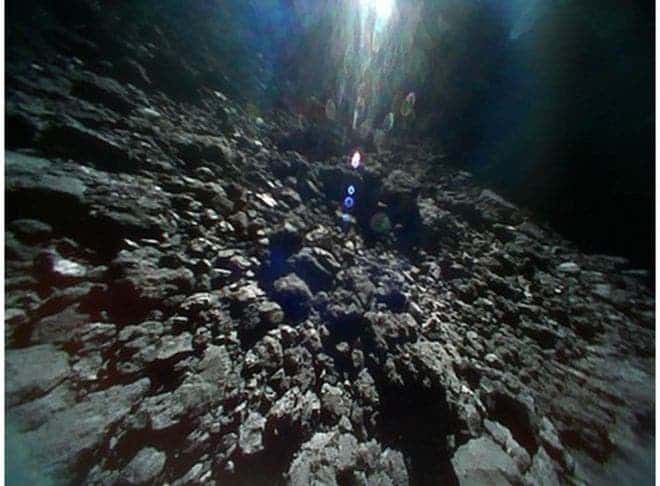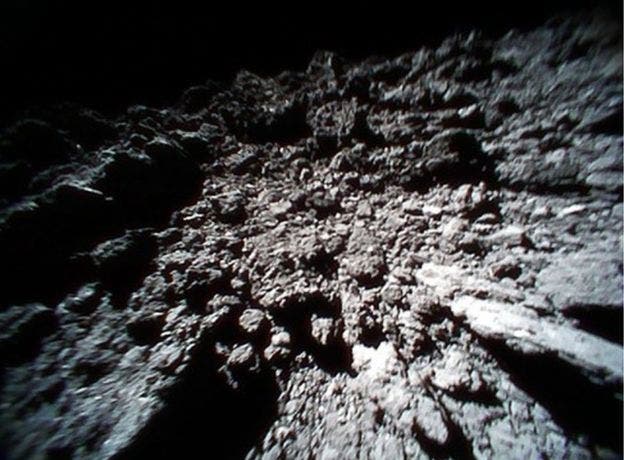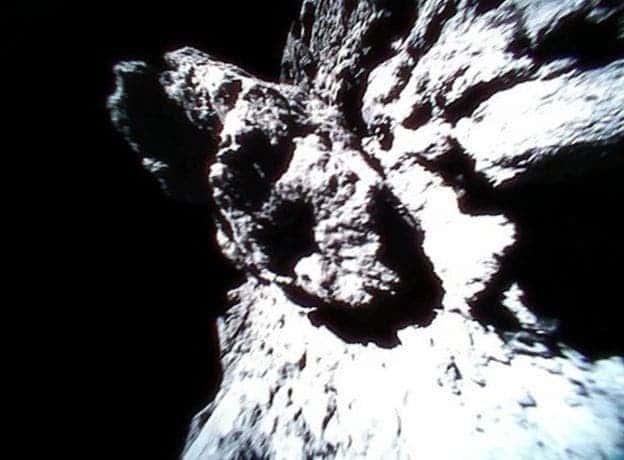On September 21, two tiny rovers operated by the Japanese space agency JAXA made history by safely landing on the rugged terrain of an asteroid. Not too long after, JAXA released the first image, much to the delight of Earthlings. But it didn’t stop there — more pictures and even a 15-frame short video from the asteroid have been beamed back.
“I cannot find words to express how happy I am that we were able to realize mobile exploration on the surface of an asteroid” enthused Yuichi Tsuda, Hayabusa2 Project Project Manager, “I am proud that Hayabusa2 was able to contribute to the creation of this technology for a new method of space exploration by surface movement on small bodies.”
The two autonomous rovers, unceremoniously named Rover 1A and Rover 1B, were dropped by Hayabusa 2, their mothership, from a distance of 60 meters from the asteroid’s surface. JAXA engineers witnessed the moment with anxiety as rovers encountered rougher than expected conditions, with very few smooth patches around.
But the rovers proved to be sturdy, operating in optimal conditions across the surface of the space rock Ryugu, which measures only 900 meters across.
Taking advantage of Ryugu’s low gravity, the rovers hop across the surface of the space rock using a motor-powered internal mass that rotates to generate inertia.
To snap these unique photos, each rover is equipped with wide-angle and stereo camera. The rovers measure only 1 kilogram, each.
Expect even more amazing developments in the near future from JAXA’s rovers and spacecraft. The next stage will see the Mobile Asteroid Surface Scout (MASCOT) lander released onto the asteroid’s surface. The lander has enough power for a 12-hour mission, in which it will analyze the asteroid’s surface at two different sites.
Also, Hayabusa2 should make a landing itself later in October. Its task will be to collect samples and, hopefully, return them back to Earth.
Ryugu is thought to be billions of years old, a remnant of the early solar system. By studying it, scientists hope to learn more about the origin and evolution of our very own planet, but also what are an asteroid’s biggest weaknesses. At one point in Earth’s history, a giant asteroid wiped out the dinosaurs. Unfortunately for them, they didn’t have science. Next time it happens, we want to be prepared!













